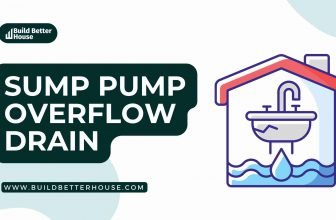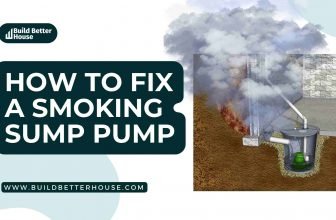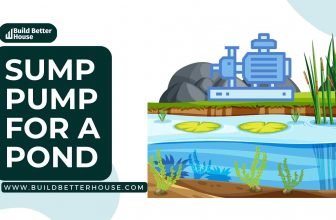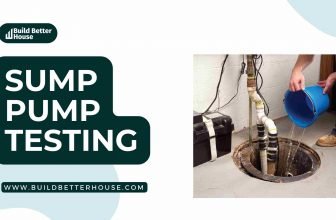No Sump Pump In The Basement? Don’t worry!
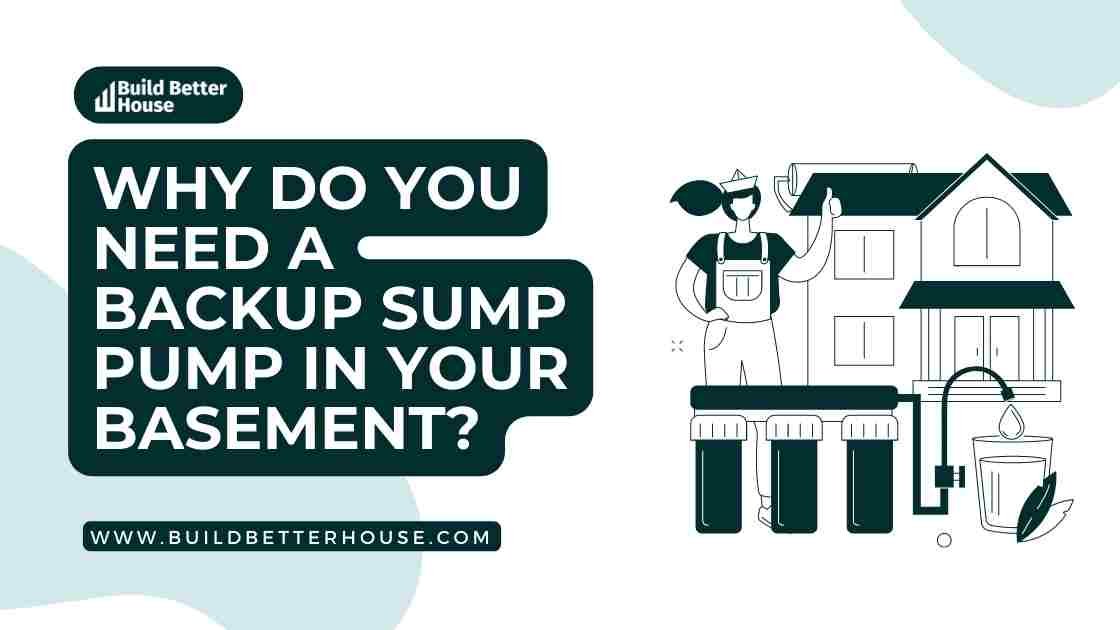
Well, numerous issues arise when there is no sump pump in the basement, especially when it rains. Water gets into your basement, and the flooding can significantly damage your home and belongings if you don’t have a backup sump pump.
No sump pump in the basement? Don’t worry! This handy article will help you with everything you need to know about installing your backup sump pump and why you need one first!
Why Do We Need A Backup Pump?
Since no sump pump in the basement might cause significant water damage, imagine you are watching TV in your living room when you notice water coming up through the cracks under your front door. That’s right; you’ve no sump pump in the basement.
If a power outage, broken water line, or flooding occurs, a backup sump pump is a handy tool that will keep your basement or crawlspace dry. These pumps are typically attached to an exterior wall with a suction hose and can be operated manually when necessary.
A backup sump pump’s ability to continue working during a power outage is its most crucial feature because it helps to protect your belongings from flooding.
You should have a backup Sump pump because the reason you should have a backup Sump pump is simple: if your water supply goes down, you need to be able to pump water out of your basement or crawlspace. That is what a backup Sump pump allows you to do.
How to choose among different pumps?
If there is no sump pump in the basement, you must choose between pumps and purchase one of the best which meets your needs and is compatible with your home.
Pumps are usually installed above the ground or in an underwater state and require different installations to meet certain specifications.
Above-ground pumps have more power and come with a steeper price tag, but submersible pumps are less expensive but have more work to install them correctly. One thing to look out for when selecting a pump is whether it has an automatic or manual switch.
If it has an automatic switch, it will turn off when water gets below a certain level to avoid any possibility of flooding. With manual control, you’ll need to manually shut the pump off after running out of water.
Is A Sump Pump Installed In Every Home?
No, not every house has a sump pump and a sump basin. The amount of groundwater and soil type in your neighborhood will determine whether or not you require one.
Sump pumps are used to remove excess rainwater from wet basements as well as high groundwater that enters your home through cracks in the concrete slab. You do not need a sump pump if your home has no or low water levels!
No sump pump in the basement does not necessarily imply the presence of a wet basement or high groundwater. If the basement has been dry for years and there are no signs of water damage on the walls, floors, or foundation, there is no need for a sump pump.
Should I Stay Away From Houses With No Sump Pump In The Basement?
The first consideration should be whether or not your home has a basement. In that case, you must verify the existence of a sump pump. As a result, basement flooding will be prevented by sump pumps.
Ensuring that all of the water in your home drains into the sump pit is how they function. The water in your home may climb into the sump pit if there is a lot of water. When it rains heavily, basement flooding is most frequently caused.
A broken pipe beneath the ground may also cause it. You might believe you can handle these kinds of problems on your own. The most outstanding action is to get in touch with a specialist immediately.
Sump Pump Or No Sump Pump In The Basement?
Installing a submersible sump pump and a battery backup sump pump is a significant financial investment. If you don’t need a sump pump, you won’t have to install one and will save money immediately!
If you’re unsure whether you need a pump, we recommend checking for water at least once a week or contacting a local plumbing company to check for leaks.
Consulting an experienced building contractor or plumber is a good idea if a sump pump is not required. They can inspect your home for water damage that may indicate high groundwater levels.
Where should you put your sump pump?
When the water reaches the sump pump, it will kick on and direct the water back to the surface once it gets to the outlet. Sump pumps should be installed near the lowest point in your basement.
Suppose you come home from work and find your basement flooded; the only thing worse is not turning on your sump pump before you leave for work. You may just save your life by installing a backup sump pump. A secondary backup sump pump system is a good idea if you live in a flood-prone area.
In most cases, you would run a pipe from your existing system and power the backup pump using another power source. The secondary backup system kicks into action if there’s a problem with the primary system or power supply.
When there’s too much water inside, the first pump kicks on; one is activated if water starts coming up through the floor drain.
What Else You Need To Know About Sump pump Installation?
An emergency backup sump pump is crucial for any home with a basement. To avoid basement flooding, you must install a backup sump pump in addition to your primary pump. Otherwise, the primary pump will fail during a power outage.
One day the power will inevitably go out; usually, it is due to a natural disaster like a tornado or an accident such as a flood, and in the absence of electricity, there’s no way the primary pump in your house will work, allowing the water to fill it up.
The great news is that a backup sump pump will only use half the power of the original, so even if you have solar panels on your roof and don’t rely on traditional power sources like electricity or gas, it’ll still work if there’s a power outage.
Common Mistakes People Make During The Installation Process
During the installation process, many people make mistakes. Some of these are as follows:
- When installing tile or stone, there are numerous factors to consider. One of the most common mistakes is failing to plan ahead of time. Considering the humidity level in your home and how it will affect your installation is critical.
- One of the common mistakes in sump pump installation is not following instructions. The number one cause of sump pump failure is water leaking into them. A backup system is vital if your primary pump fails. Call emergency services immediately if your basement floods and the backup pump doesn’t work!
- You should also thoroughly read the manufacturer’s instructions before beginning work. It is also critical to compare your tools to the manufacturer’s recommendations. The right tools will speed up the installation process, reducing damage and making your job easier overall.
- A final thing to consider with your installation process is whether or not you’ll need an air release valve on top of the discharge pipe. The air release valve helps prevent excessive back pressure when pumping out standing water, which can cause your primary pumps to burn out more quickly than usual.
It’s worth checking if you have standing water in your basement often, about once every four years on average for many homeowners. Since a professional is always preferable to a do-it-yourselfer! Following these simple guidelines can avoid potential problems during the shower installation process!
When Should I Consult A Professional?
If you have no sump pump in the basement, you should seek a professional to install one if your current one isn’t working properly. The key is ensuring that any water entering your basement has a way out.
Furthermore, keep in mind that delaying the resolution of a basement flooding problem may result in additional damage and costs. For a full basement inspection, contact your local home inspection team. In addition, they can recommend a reputable master plumber.
Final thought!
At this point, it should be clear that no sump pump in the basement will cause major problems or significantly increase your spending on resolving them, whereas sump pumps protect your property from floods and water build-up in residential and commercial settings. Even if your basement is not prone to flooding, a sump pump might be useful if there is excessive moisture near your house’s foundation.
If you’ve no sump pump in the basement, you could be in for a nasty surprise the next time it floods. When the water reaches a sump pump, it activates and directs the water back to the surface. They should be installed near the basement’s lowest point.
A backup sump pump is a good idea if your primary pump fails. You can get a secondary pump powered by another power source or a battery-powered pump.
No sump pump in the basement will lead to excess water from a significant storm that will begin to accumulate at the lowest point of your home. It could be the basement, crawlspace, or foundation. Water will warp wood, cause rot, and encourage mold growth wherever it settles.



